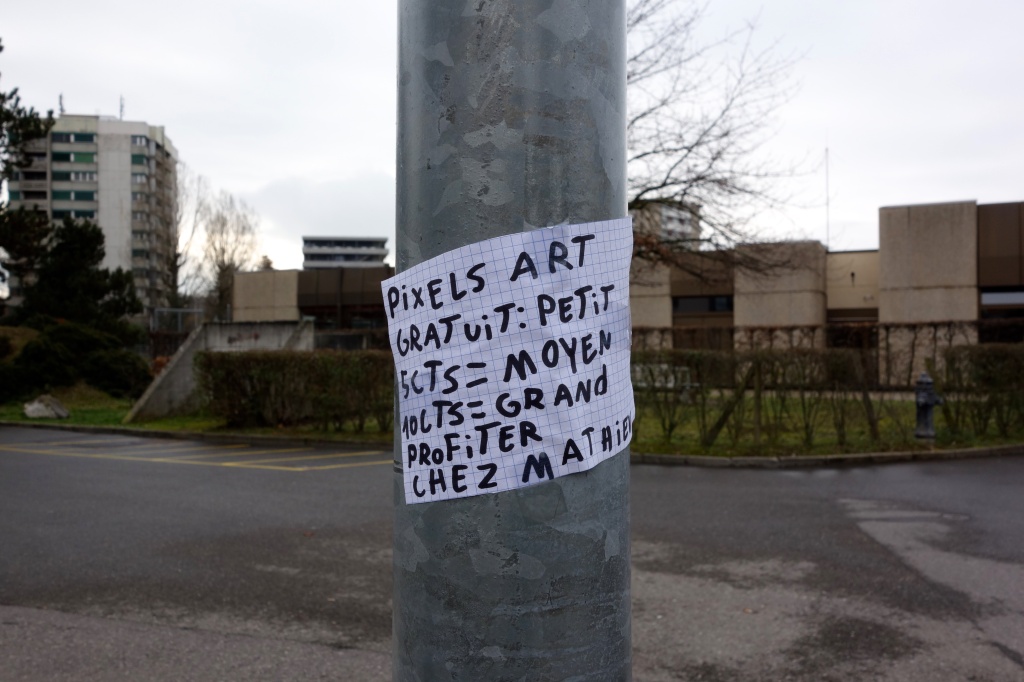
Lausanne, Feb 7, 2016. A DIY ad by Mathieu, perhaps a kid from this neighborhood, who sells "pixel arts" for a small sum on money: 5 centimes (Swiss Francs) for average size, 10 for big size. One can find them "Chez Mathieu" (at Mathieu's place), and he encourages us to take advantage of this opportunity ("Profiter", which has a typo as it should be "Profitez").
While a "pixel" is not exactly a creature, it belongs to this investigation of the digital menagerie we're interested in here. Mostly because a pixel is defined as an "element". The term is a combination of pix- (from "pictures", shortened to "pics") and -el (for "element"), and it can be defined as the smallest addressable element in a raster image (or the smallest addressable element in a dot matrix display device). As defined on the Wikipedia, pixels are the smallest element that can be manipulated through software in most digital display devices.
"Pixel Art" – what Mathieu from Lausanne offers here – is a form of drawing made with a graphical software in which images are built using pixels as the only building block... leading to this low-resolution graphics commonly used on machines which have a limited number of pixels and colors available; typically, computers and video game consoles with 8-bit and 16-bit era, LED displays and graphing calculators.
Why do I blog this? As a basic "element" of digital art/culture, the pixel is a remarkable entity one could study in anthropology. A tiny entity actually, whose investigation could belong to the exploration of "minuscule worlds", as carried out by the ethnographers who wrote in this issue of Techniques & Culture few years ago.